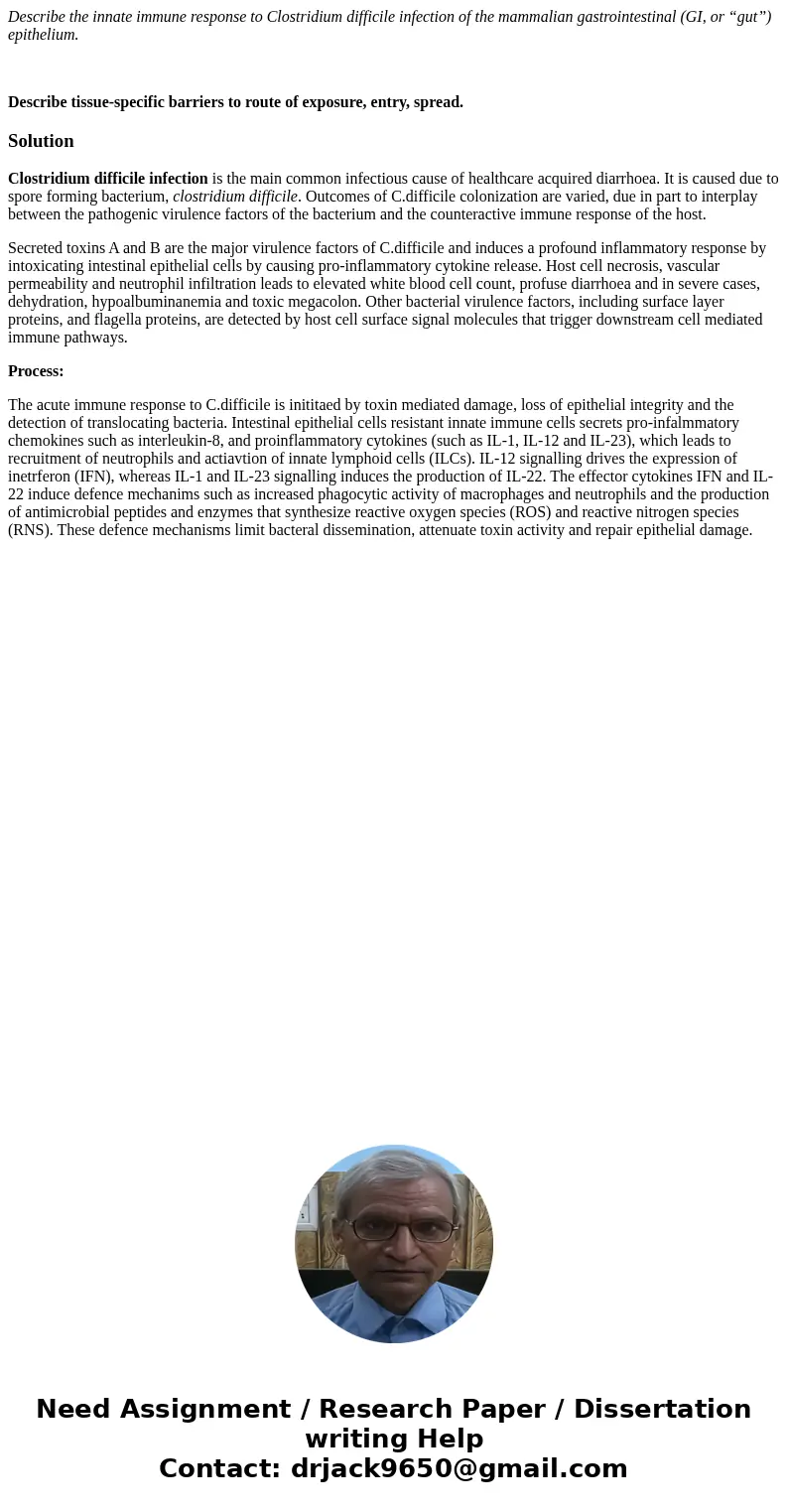Describe the innate immune response to Clostridium difficile
Describe the innate immune response to Clostridium difficile infection of the mammalian gastrointestinal (GI, or “gut”) epithelium.
Describe tissue-specific barriers to route of exposure, entry, spread.
Solution
Clostridium difficile infection is the main common infectious cause of healthcare acquired diarrhoea. It is caused due to spore forming bacterium, clostridium difficile. Outcomes of C.difficile colonization are varied, due in part to interplay between the pathogenic virulence factors of the bacterium and the counteractive immune response of the host.
Secreted toxins A and B are the major virulence factors of C.difficile and induces a profound inflammatory response by intoxicating intestinal epithelial cells by causing pro-inflammatory cytokine release. Host cell necrosis, vascular permeability and neutrophil infiltration leads to elevated white blood cell count, profuse diarrhoea and in severe cases, dehydration, hypoalbuminanemia and toxic megacolon. Other bacterial virulence factors, including surface layer proteins, and flagella proteins, are detected by host cell surface signal molecules that trigger downstream cell mediated immune pathways.
Process:
The acute immune response to C.difficile is inititaed by toxin mediated damage, loss of epithelial integrity and the detection of translocating bacteria. Intestinal epithelial cells resistant innate immune cells secrets pro-infalmmatory chemokines such as interleukin-8, and proinflammatory cytokines (such as IL-1, IL-12 and IL-23), which leads to recruitment of neutrophils and actiavtion of innate lymphoid cells (ILCs). IL-12 signalling drives the expression of inetrferon (IFN), whereas IL-1 and IL-23 signalling induces the production of IL-22. The effector cytokines IFN and IL-22 induce defence mechanims such as increased phagocytic activity of macrophages and neutrophils and the production of antimicrobial peptides and enzymes that synthesize reactive oxygen species (ROS) and reactive nitrogen species (RNS). These defence mechanisms limit bacteral dissemination, attenuate toxin activity and repair epithelial damage.

 Homework Sourse
Homework Sourse